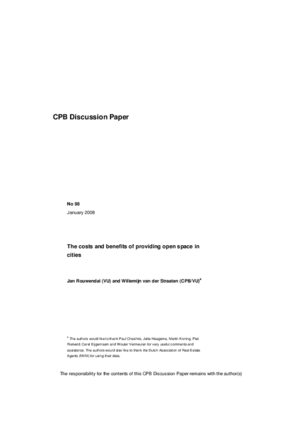The costs and benefits of providing open space in cities
Hagenaars en Rotterdammers: grotere bereidheid om te betalen voor stedelijk groen dan Amsterdammers
We are sorry, unfortunately there is no English translation of this page.
We use the monocentric model of a city to derive a simple cost-benefit rule for the optimal provision of open space.
Although many researchers have investigated the value of open space in cities, few of them have compared it to the costs of providing this amenity. The rule derived here is essentially the Samuelson-condition for the optimal provision of a public good, with the price of land as the appropriate indicator for its cost. The condition is made operational by computing the willingness to pay for public and private space on the basis of empirical hedonic price functions for three Dutch cities. The conclusions with respect to the optimal provision of open space differ between the three cities. Further investigation reveals that willingness to pay for parks and public gardens increases with income, although not as fast as that for private residential space.
